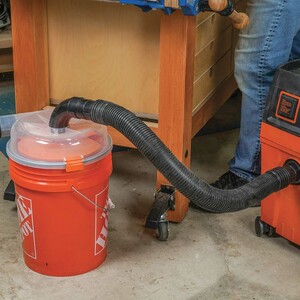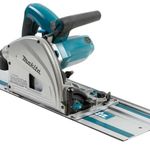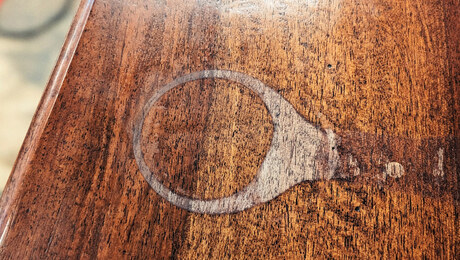
Synopsis: Gregory Johnson says a sprayed lacquer finish is more difficult to apply than oil or brushed varnish, but it’s among the most workable, practical finishes for the small shop. Here, he describes spray lacquer basics and shows problems often faced in lacquering furniture: inside corners, both sides of a flat panel, etc. He starts with safety information and how to prepare the wood for finishing, whether that’s just sanding or filling pores. He thoroughly details his series of spray coats and sandings, indicating when to do touch-ups, handles and knobs, and burn-ins. He includes supply information and tips on setting up a spray booth. Side articles discuss selecting spray equipment, and a companion story by David Shaw deals with improvising a spray booth.
I once heard a story about an old man in a brass foundry who had been tirelessly polishing a huge brass door for hours on end. Another man, having watched him work for awhile, finally spoke up. “That door is just beautiful. How do you know when it’s done?” Still polishing, the old man answered, “It’s never done. They just come and take it away.”
You could say the same thing about a hand-rubbed lacquer furniture finish. The more you rub, the better it gets. But long before they come to take it away, you’ll have achieved a splendid finish that protects wood against abrasion, heat, alcohol, dirt and water much better than an oil finish. True, a sprayed lacquer finish is more difficult to apply than oil or brushed varnish, but it’s among the most workable, practical finishes for the small shop. It’s fast drying and you can see results quickly. Lacquer alone brings out the beauty of natural wood in its lightest tone. Most problems in a lacquer finish are evident within five minutes after spraying. If it doesn’t blister, pinhole, craze or look like a lunar landscape within that time, chances are very good that it won’t fail later on. And if, for some reason, you don’t like the results, you can usually strip it off with thinner and start again.
In this article, I’ll describe spray lacquer basics using a desk made by my nephew, Paul Johnson, as an example. The desk presents most of the problems you’ll face in lacquering a piece of furniture, including spraying inside corners and finishing both sides of a flat panel that will be exposed to heavy wear. Since the desk is made of maple and purpleheart, two nicely contrasting woods, no masking or staining was required, making this a straightforward, clear lacquer job. It’s possible to mix stains and glazes with lacquers or to color wood by spraying opaque lacquers, but these techniques are the subject of another article.
From Fine Woodworking #62
For the full article, download the PDF below:
Fine Woodworking Recommended Products

Dustopper Pro

Makita SP6000J1 Track Saw






















Log in or create an account to post a comment.
Sign up Log in